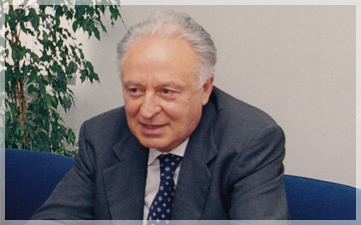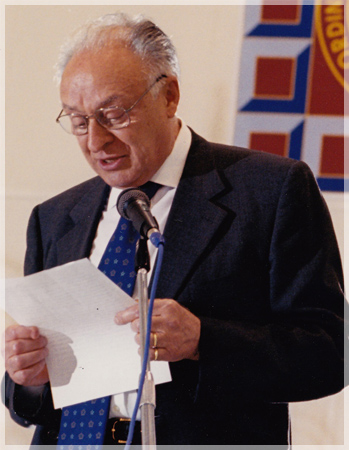GUIDO FERRARA
Born in 1931 in Arienzo San Felice, in the area of Caserta, son of Renato and Teresa Lombardi, the young Guido Sergio Maria – his first names – has grown up in a place where, except from the studying, which he said it was “the real work”, he enjoyed many other working activities.
At the age of 18 he became a successful cinema operator. His cinema was one the most popular of the area because he used to arrange the film programming as a customer and not as a manager, as he always said.

He attended the university for mechanical engineering and the first 2 years he brilliantly succeeded in it. Then he attended the polytechnic university. Graduation was only a matter of a few exams when his excellent managerial skills and his curiosity led him to accept the job position his grandfather Pellegrino Lombardi offered him: being the manager of the mill and pasta factory that his grandfather owned.

At the beginning he strived to study while he was working but the demanding managerial life forced him to make a painful choice that privileged the business.
The exclusive and constant commitment and the development of its work led to many arguments with his grandfather because of their different view of doing business. His grandfather, who was at that time a celebrity in the pasta sector as he invented the continuous cycle machines for production and drying in the 1930s, had to accept his nephew’s solutions…as the patents in the name of Pellegrino Lombardi demonstrate.
At the age of 26, as he gained a vast experience and since he had frequent arguments with his grandfather, Guido Ferrara decided to build his first factory in San Paolo Belsito, in the province of Naples. There he was engaged not only in the production process but also in the research for continuous technological upgrades.
After careful evaluations he realized and spreaded the pasta drying process called prosciugazione at high and very high temperature. A technology which is nowadays adopted in pasta factories all around the world.
At the same time he engaged himself in floriculture and he established important relationships with the biggest Dutch companies in that sector, contributing to the creation of new varieties of tulips. During these years he was also engaged in social activities in San Felice a Cancello. His great passion for football and the pressing invitation of some of his friends from San Felice (including Pietro Passariello and Aniello Morrone) made him become President of the Polisportiva Sanfeliciana, a highly respected team at the time, coached by Gianni Di Marzio, the future coach of the A Serie Naples Soccer Club.
After many years in San Paolo Belsito, he decided in 1989 to build a new factory in the industrial area of Polvica di Nola, at the borders with San Felice a Cancello. A return to his homeland.
